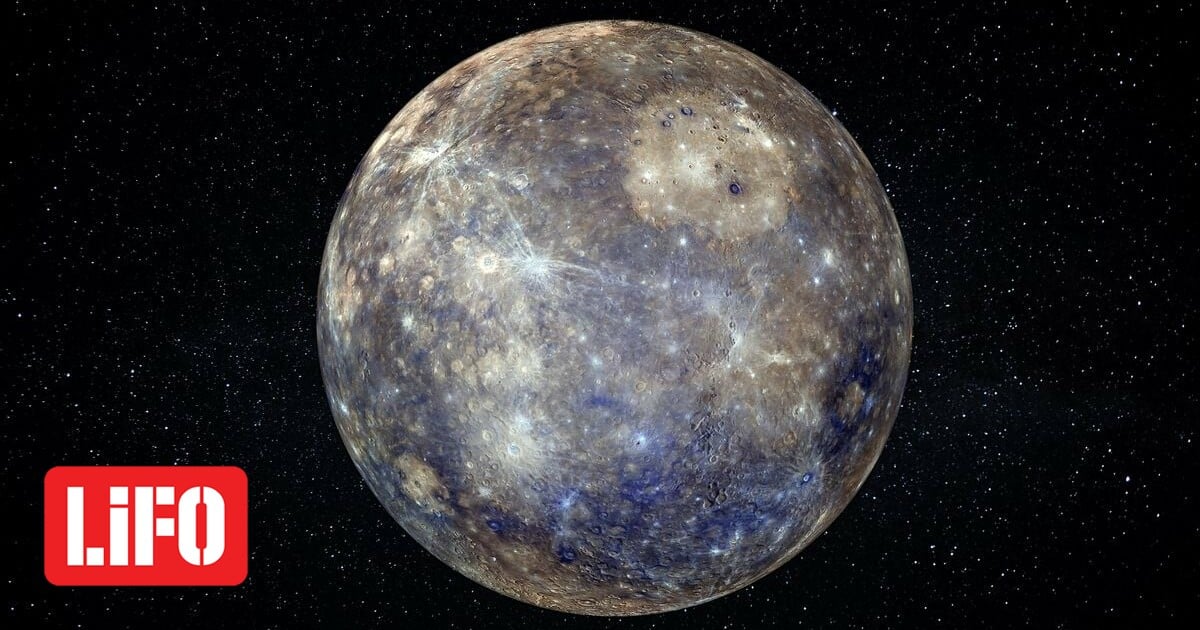
From its 'silly' core to the mysterious chemical composition of its surface, Mercury is full of surprises – and not just about its origins – and some answers to the mysteries of the smallest planet in the solar system may be hidden in rocks found in Cyprus.
Nicola Marí is a planetary geologist at the University of Pavia in Italy, who studies the ways in which our neighbors in the solar system formed and evolved. In his doctoral thesis, he studied lava flows on Mars. This time it was his target Planet Mercury – via Cyprus.
Specifically, he looked for a particular type of rock, called boninite (also known as a high-magnesium form of basalt, characterized by its low titanium content and trace element composition) that is believed to contain A strange resemblance to rocks found on Mercury – A hypothesis that, if correct, could be evidence of the planet's unique origin.
Mercury is the planet of extremism. With the total Its size is slightly larger than the Moon, and it is the smallest planet in the solar system And the closest to the sun. Mercury has no atmosphere to retain heat, meaning its surface temperature ranges from 400°C during the day to -170°C at night. It also has the shortest orbit of any planet in the solar system, with each year lasting only 88 Earth days.
Planet Mercury – Image: NASA
Mercury's location has made it very difficult for scientists to study. One reason is heat. Spacecraft approaching the planet must be able to withstand scorching temperatures because they orbit so close to the sun. The other reason is gravity. The closer it is to the Sun, the stronger its pull, which accelerates the spacecraft's speed. This makes precise maneuvering more difficult, with many “detours” around other planets.
“From an orbital point of view, it's probably more difficult to get to than to Jupiter,” says Ignacio Clerigo, director of operations for the BepiColombo spacecraft, ESA's current mission to Mercury, a project to which Mary's work contributes.
Mercury has been studied less than the other planets
These difficulties mean that Mercury has been less well studied than our other “neighbors”.. Two previous missions — Mariner 10 and MESSENGER — have flown close enough to map its cratered surface, discovering — and revealing — some big surprises about its structure. One of them concerns the core of the planet. The other rocky planets — Venus, Earth, and Mars — all have a relatively small core, surrounded by a thick mantle of magma and a solid crust. However, Mercury's crust appears surprisingly thin, while its core is unexpectedly massive compared to the mantle. “It's ridiculous,” says Mary.
Unexpectedly, these missions revealed that Mercury is surrounded by a magnetic field. This, combined with its density, suggests that it has an iron core, and like Earth's core, the core may be partially molten.
But the mystery still continues, as the percentage of chemicals present on Mercury's surface is highly unusual. Using a technique known as spectrophotometry to analyze the planet's chemical composition from a distance, scientists know that Mercury contains a much higher concentration of thorium than its closest neighbours. Thorium is supposed to have vaporized in the intense heat of the early solar system. Instead, its thorium content is closer to that of Mars – three planets away from us – which may have formed at cooler temperatures due to its distance from the Sun.
According to the BBC, scientists expect that Mercury started out with a larger mass, compared to the Earth's mass. It is believed that an early massive impact is responsible for its size reduction Changing its orbit, giving rise to the compact world we observe today. Additional studies of similar Earth rocks may provide valuable clues about Mercury's past geological activities and its incredible journey through our solar system.
Cyprus is a piece of the Earth's crust that formed under the Tethys Ocean more than 90 million years ago. As the tectonic plates collided, it was eventually pushed to the surface, becoming the island we know today. The landscape still has an otherworldly feel, with green, mineral-rich rocks, Mare says. “In some areas of the mountains of Cyprus, it is as if we are still walking over an ancient ocean“, he says. Eventually, he found the specific pieces of lava he was looking for, where bonite is formed from the solidification of molten lava
Marie returned home and, in collaboration with colleagues at NASA and the Museum of Planetary Science in Italy, analyzed the composition of the rocks and compared them to samples taken from Mercury. When the results came out, he was astonished. “They weren't just similar, they were identical.” The mixture of elements such as magnesium, aluminum and iron was the same as that observed in the mysterious planet with a massive core. The only difference was that the rocks from Cyprus had been oxidized – which was inevitable given Earth's oxygen-rich atmosphere. This makes it Mercury's first true terrestrial counterpart, providing a valuable additional data point for our understanding of the planet, Marey says.

“Total alcohol fanatic. Coffee junkie. Amateur twitter evangelist. Wannabe zombie enthusiast.”





More Stories
Is this what the PS5 Pro will look like? (Image)
Finally, Windows 11 24H2 update significantly boosts AMD Ryzen – Windows 11 performance
Heart Surgeon Reveals The 4 Things He ‘Totally Avoids’ In His Life